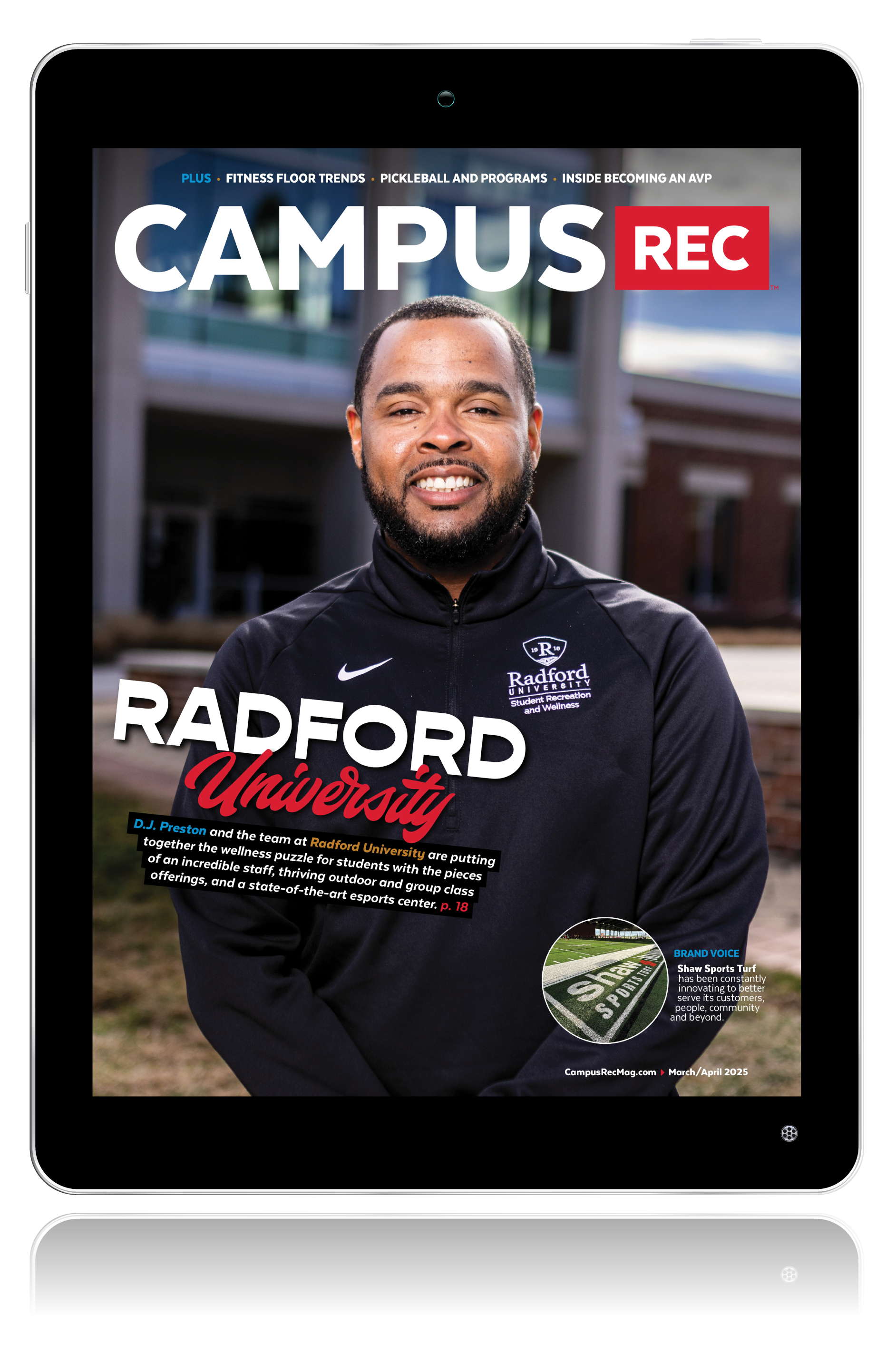This past February, the University of Nevada, Reno, opened the doors to a new state-of-the-art facility — the E.L. Wiegand Fitness Center, a 108,000-square-foot, $46.5 million fitness center. After outgrowing the previous 54,000-square-foot facility built in 1974 to serve a population of 5,000, the university realized they needed more room for the now 20,000 people on campus and decided to expand.
Students approved the fee for construction in 2014 and in June 2015, the project broke ground. The facility opened in February 2017.
Johnny Berriochoa, the fitness coordinator at the university, stated the focus on fitness is what makes it different than other facilities at universities. “There are no saunas, hot tubs, food services, personal training, wellness or fitness assessments,” explained Berriochoa. “It’s all just about fitness and increasing our campus culture’s work capacity.”
The facility is centrally located on campus and is around 300 yards from the old building, creating a “hub” between the Knowledge Center, the Student Union and the Fitness Center on campus.
One of the most striking — and most popular — features of the facility is the four-story fitness stairway that is incorporated into various fitness classes in the facility and also available for members to use as they wish.
“The stairway is amazing. It is unique to this facility, and to our knowledge, it is the first purpose-built stairway/stadium step dedicated to fitness in the country,” added Jim Fitzsimmons, the director of fitness and recreational sports at the University of Nevada, Reno. “It runs four stories in one direction and at the top merges with an 1/8 mile track. One side is a 14-by-14 foot stadium step and the other is a standard 7-by-7 foot step. In the process of visiting campuses to see new buildings, we realized many schools had built grand stairways as a part of the architecture of the building — they would invariably be covered with signs stating, ‘no running on stairs,’ and the students were still exercising on the stairs. So why not go for it?”
While the facility is a success, there were many challenges to overcome during the building process. “The constant amount of change is one of the biggest challenges we had, with the construction push backs, setting the opening date and trying to get things ready for the students who are so excited,” said Jill Karlin, the program and marketing coordinator for fitness and recreational sports at the university. “We carry a lot of equipment, and the transition of the equipment was a struggle. We had to be out of service for a small window, trying to make sure that all of the technology and everything was set up for the first initial opening.”
Karlins’ expert piece of advice: Keep good and open communication with the architects and planning committee.


















